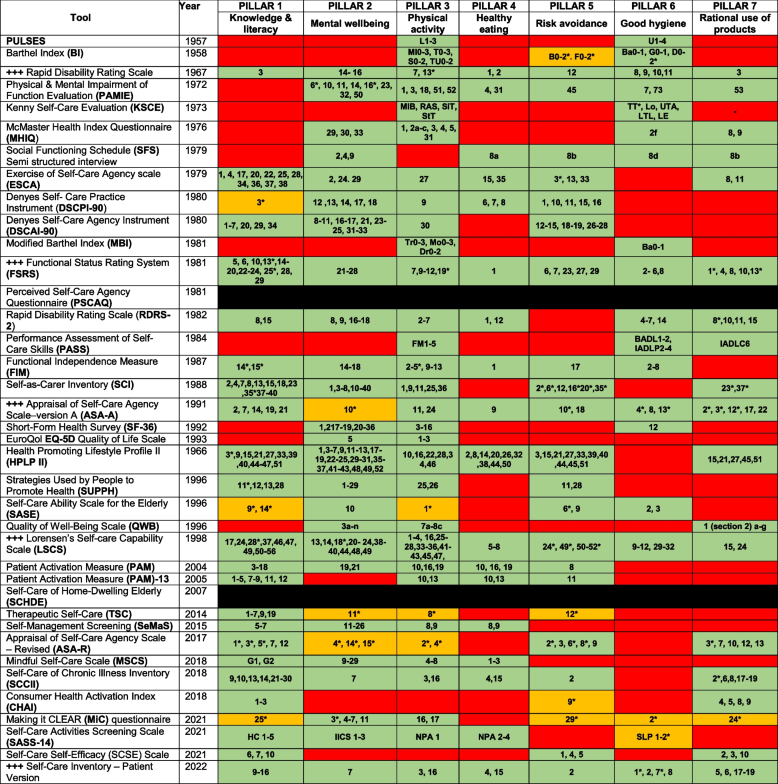
- A matrix of configurations recorded the name, year, number of items and theoretical framework (if available) of each tool. The number of items in a cell indicated whether the tool fully or partially addressed one of the pillars of self-care. A black, red, amber and green (BRAG) traffic light system was used, where black denoted that the instrument was not available to review, and no decision could be made (score = 0), ed indicated that the instrument was available, but a pillar was not addressed in the tool (score = 0), amber indicated that at least one item of the questionnaire partially addressed a pillars (denoted with *), and green indicated that data was available, and the pillar was explicitly addressed in the tool item (score = 1). KEY: Pulses (L) Lower limb functions, (U) Upper limb functions], [BI (MI) Mobility indoors, (T) Transfers, (S) Stairs, (TU) Toilet use, (B) Bladder, (F) Feeding, (Ba) Bathing, (D) Dressing, (G) Grooming], [KSCE (MIB) Moving in Bed, (RAS) Rising and sitting, (SiT) Sitting transfer, (StT) Standing transfer, (TT) Toilet Transfer, (Lo) Locomotion, (UTA) Upper trunk and arms, (LTL) Lower trunk and legs, (LE) Lower extremities], [MBI (Ba) Bathing, (Tr) Transfer, (Mo) Mobility, (Dr) Dressing], [PASS (FM) Functional Mobility, (BADL)Basic activities of daily living, (IADLP) Instrumental activities of daily living-physical, (IADLC) Instrumental activities of daily living-cognitive]. + + + indicates that the tool either partially (amber) or fully (green) addressed all seven pillars of self-care [19, 25,26,27,28,29,30,31,32,33,34,35,36,37,38,39,40,41,42, 44,45,46,47,48,49, 51,52,53,54,55,56,57,58,59,60,61,62,63,64,65]

